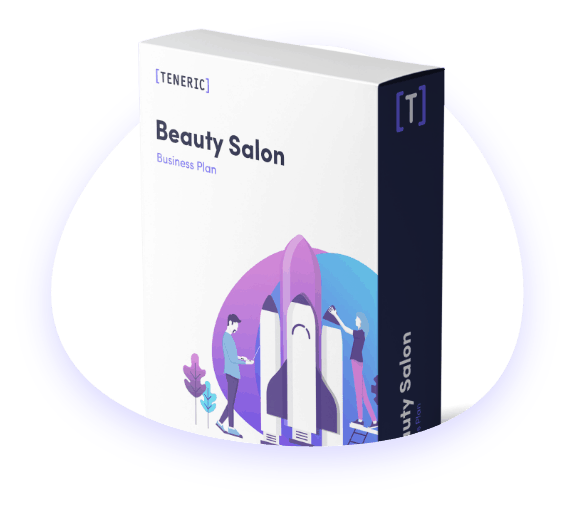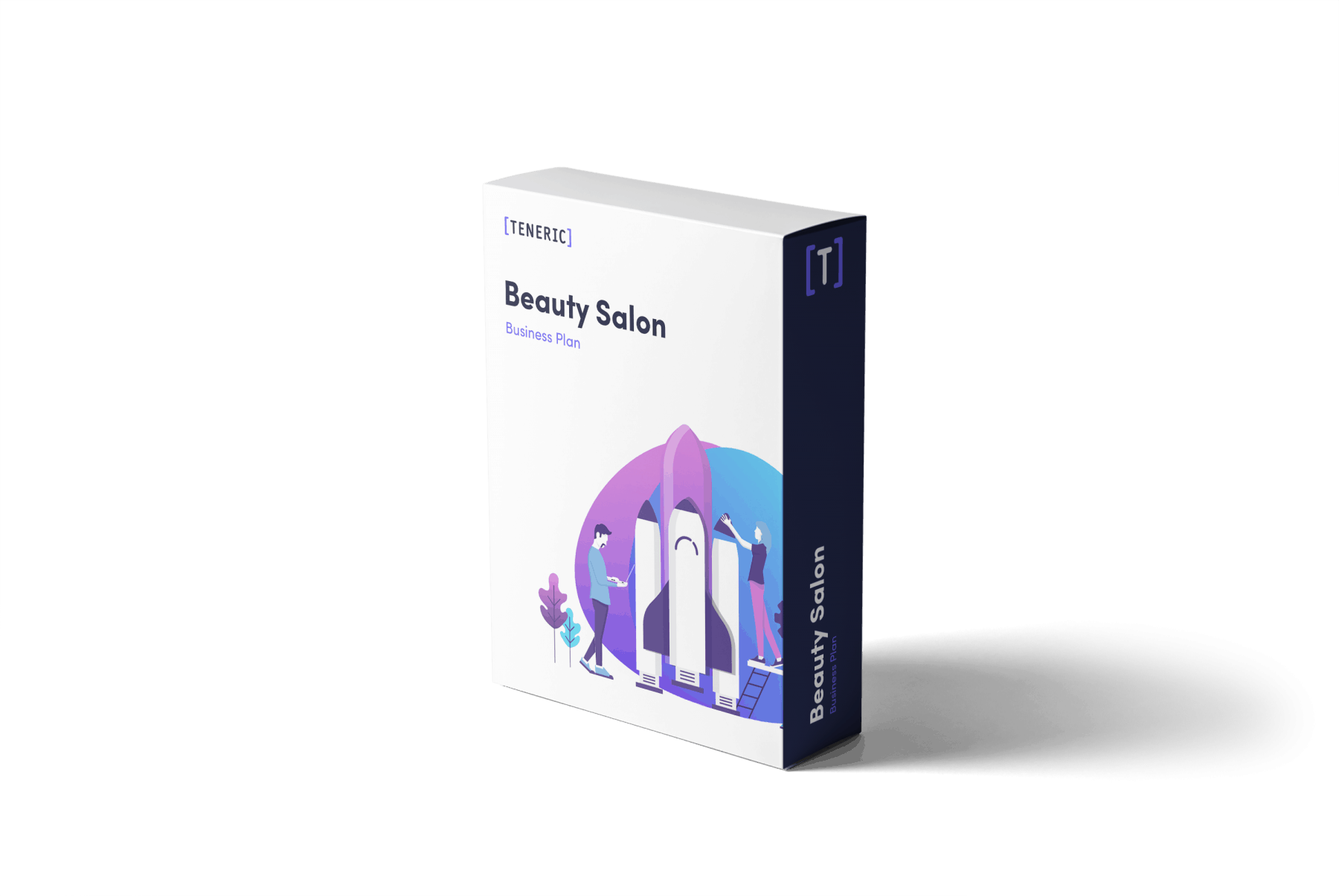Starting your own hair salon or beauty salon is an exciting prospect. The size of the hair and beauty market in the UK is enough to tempt many interested in the beauty business into starting up their own salon. It’s estimated in 2023 the hair and beauty treatment industry will generate £2.5 billion in turnover for the UK economy.
This opportunity isn’t just limited to a few major brands. In the UK, there are more than 43,000 hair and beauty businesses, and 94% of these businesses employ fewer than ten people.
If you’re reading this, chances are you’re already excited about launching your own beauty salon. So now it’s time to set down your business strategy and get the financial backing you need to make your dream a reality.
Getting to grips with the sales strategy and marketing plan, pricing structure, directorship and management of your future salon’s business plan are core components to plan for. As the site owner, you will have a lot to take into consideration, but with the help of our salon business plan outline, we’ll help you through each step.

Before you get carried away with imagining your salon concept, hairdressing dream, barbershop ideal, and perfect beauty salon, there are some practical questions you need to consider. Namely, is this the right business for you?
Yes, there are great opportunities in the beauty industry, but you need to be honest with yourself about your local competitors, how you’ll distinguish yourself from other beauty salons. You’ll also have to consider whether you have the time and experience to run your own business.
By putting your plan to paper, you can gather all your ideas and findings into a simple document and organise your resources.
There are a lot of factors to consider here, but the average cost of opening up a hair salon in the UK can range from £3,000 to £35,000. Your startup costs will vary depending on the equipment you need and how many services you want to provide.
There are ways that you can cut costs and open a hair or beauty salon for less. For example, you could take over an existing hairdresser, or start your business with you as the sole employee until you are ready to hire new staff.
With this in mind, a salon business plan is how you can prepare for any financial obligations from the very start. We’ll help you figure out how to raise the capital you need based on your current financial situation and existing funds.
We’ll guide you through writing your salon business plan, step by step. It’s essential that, if you’re planning to secure funds from a bank, the business plan for your salon is as thorough as it can be.
Not only that, but we’ll give you over 25 ways to market your hair and beauty business for free included within your plan.
Below, we’ll walk you through an example of a hair and beauty salon business plan.
Remember, this is only a guide. You should take the time to write a business plan for your hairdressing and beauty parlour in much more detail.
When it comes to your hair and beauty business, precise planning now will help you avoid pitfalls in the future.
First things first, you need a punchy introduction to your business. It has to grab your reader’s attention and really sell your business at a high level.
If you’re struggling to write your executive summary, try pitching your business to a friend and see how they react. Have you got their attention and are they excited? If they’re drifting off, then it’s time to go back to the drawing board.
Now you get to share the details of your business to potential investors and key stakeholders. Treat this as an opportunity to tell your readers about your salon or spa, what kind of treatments you will offer and what makes your business unique.
Another top tip is to remember the key takeaway you want your readers to leave with. What do you want them to remember about your business and why?
This is a good prompt to include a striking mission statement. Talk about your customer service aims, staff, and marketing plan.
Think about how you can convince investors to put their hard earned money into your salon. Take their perspective and focus on areas that you know will catch your backer’s interest.
You need to demonstrate a thorough knowledge of the hair and beauty industry and the market available to you.
This section is a blueprint for your business but remember to keep it brief; you can go into more detail in later sections.
Feel overwhelmed? Not sure where to start? We’ve done all of the hard work for you.
Unless you plan on opening a one-man band, you’ll need to hire full time employees to help you run a successful hair and beauty salon.
This is your chance to paint a picture of your management team and any other resources, from full time salon staff to part time employees.
Don’t forget to include yourself in this section! Outline what your responsibilities will be in your business.
To give investors confidence in you and your business, you’ll need to demonstrate a thorough understanding of the hair and beauty industry.
There will be a number of other salons like yours, but by doing your market research, getting a handle on the competition and your target customers, you can seize on the right opportunities for your business.
The first thing you’ll want to consider is your target market.
Add a profile of your target customer to your business plan. Who are they, and what problems will you solve for them? What services do they need that you can provide? Detail your ideal customer and how you will attract them.
Next, you need to be clear about how you will stand out from all the other spas in the area.
The beauty industry is a big one. By 2022 UK consumers are expected to spend £487 per head on products to improve their appearance. You’ll need to prove that you can bring something unique to the market to help you stand out from other salon owners.
To work out your potential strengths and weaknesses, we recommend using the SWOT analysis framework. This technique will help you work out your:
Your goals and business objectives section of your business plan will tell your investors where you want to go and exactly how you’ll get there. Here; you’ll detail where you expect your business to be over the next few months, year and five years.
To show you’re serious you’ll need to be optimistic, but also realistic. A top tip when writing your business objectives is to make sure that your objectives can be tracked.
Remember, it’s great to show people that you’re ambitious for your business but don’t go overboard.
Deciding on your business model, and what kind of beauty treatments you’ll offer will give you a clear idea of what sort of premises you’ll require, and how much money you’ll need to spend to open up your hair and beauty salon.
Will you focus on hairdressing or beauty treatments? Or a mixture of both? Will you provide bridal services? You’ll need to have this down before you buy in your equipment.
The key here is to be clear on what you’re offering from the start in your hair and beauty salon. If you want to expand later, that’s fine, but there’s no point in spending money on expensive skin treatments if your existing business focuses on hair care.
If you want people to invest and believe in your business, you’ll need to prove that they have a realistic chance for a return on their investment (ROI). Again, you’ll need to balance optimism with realism in your financial plan.
As well as showing your projections for the next 6 months to a year, you’ll need to provide a long-term projection.
Another thing to remember: diversify your income. The market is huge, and there are plenty of extra services you can offer to diversify your business model and boost your income.
Investors will feel more confident in your business if you can show that you can expand your services and tap into new markets.
Writing down your financial forecast can feel daunting, but remember, this isn’t like filing a tax return and doesn’t have to include every possible scenario. It’s an educated guess, based on your careful research and past results.
We’ve taken all of the hard work out of planning your finances for your salon. Download your salon business plan template instantly below.
Unless you have a handy trust fund, you’ll need to land investment from backers to get your hair and beauty salon off the ground. You’ll need to be really clear in your business plan about where any existing money has come from to avoid potential future embarrassment in the future.
To make sure you don’t hit any financial shortfalls, be honest about how much you still need to raise.
Add details about how you’ll spend any investment. Will you use it to buy supplies, spend it on rent for your hair or beauty salon, or put it towards your staffing costs? This will help your readers decide if you’re a worthy investment and if your plans are sound.
If you need an example of how a hair and beauty business plan might look, we’ve pulled together a small Word template that you can use to get you started for your beauty salon business plan outline.
It’s an exciting time to launch your own business, and if you have a passion for hair care, beauty and relaxation, then a hairdressers, spa, beauty salon or nail salon could be the perfect opportunity for you.
Starting any business is a challenge, and 60% of new businesses in the UK fail in the first three years.
By writing your salon business plan you will have a better idea of how to make sure your hair and beauty salon will thrive, and anticipate potential threats and opportunities.
Creating a well thought-out business plan will help you ensure that your beauty business doesn’t stay a dream, and make it a reality.
